 When you hear the phrase “speed training,” it’s easy to picture elite athletes—sprinters blasting off the line or pros flying down the field. But speed training isn’t reserved for them. Anyone can benefit from learning to move more efficiently, react faster, and generate more power. In fact, adding a little speed work to your weekly routine can help you feel stronger, more coordinated, and more confident in your movement—whether you’re running, lifting, or chasing your kids around the yard.
When you hear the phrase “speed training,” it’s easy to picture elite athletes—sprinters blasting off the line or pros flying down the field. But speed training isn’t reserved for them. Anyone can benefit from learning to move more efficiently, react faster, and generate more power. In fact, adding a little speed work to your weekly routine can help you feel stronger, more coordinated, and more confident in your movement—whether you’re running, lifting, or chasing your kids around the yard.
What Is Speed Training?
Although speed training is most often used to improve athletic performance, it’s more than just running fast. It’s a structured way of teaching your body how to move quickly, efficiently, and under control. At its roots, speed training combines technique, strength, and cognition to help you generate force rapidly and apply it in the right direction, a skillset valuable in any physical activity.
A few key concepts to consider in the realm of speed training:
- Rate of Force Development (RFD): A useful metric that measures the production of maximal force in a minimal amount of time.
- Acceleration: Building and developing speed, from a moving or stationary start position.
- Impulse: The ability to turn strength into speed through the rapid application of the force your body can produce.
- Mechanics: The technical side of movement, like stride length, stride frequency, and posture.
While these principles might sound like they belong solely in sports performance, they have direct benefits for everyday fitness. Improving your acceleration and agility doesn’t just matter on a soccer field or track. It can also help you move more confidently in the gym, in recreational exercise, or even in activities of daily living like climbing stairs or avoiding a misstep.
The Fundamentals of Speed Training
Speed training can be complex, but the fundamentals are straightforward. The goal is to train your body to produce more force in less time, which translates into faster, more efficient movement. A well-rounded approach combines physical strength, sharp cognitive skills, sound mechanics, and focused sprint work.
1. Strength & Power Training
Strength is your base. Classic lower-body exercises like squats, deadlifts, and lunges build the muscles that drive acceleration. To turn that strength into speed, add plyometric exercises—like bounding, jump squats, or box jumps. These movements train your muscles and nervous system to fire faster.
Try focusing on speed of movement during lifts (for example, standing up from a squat with controlled power). Over time, this helps your body produce force more explosively.
2. Perceptual-Cognitive Training
Speed isn’t just physical—it’s mental. In sports, athletes constantly react to changing environments. You can train that same skill by practicing reactive drills—for example, sprinting or changing direction based on a partner’s hand signal, color cue, or verbal command.
For everyday fitness, this type of training keeps your brain sharp while improving your body’s ability to move efficiently under pressure.
3. Mechanics & Technique
Good form equals free speed. Focusing on posture, stride rhythm, and arm drive helps prevent wasted effort. Incorporate simple drills like A-skips, B-skips, or wall drives to reinforce correct sprinting patterns.
Even if you’re not sprinting regularly, these drills improve coordination and lower injury risk by teaching your body to move more purposefully.
4. Sprint & Agility Work
This is where it all comes together. Short, explosive sprints, resisted runs, or cone agility drills develop quickness, deceleration, and control. Keep sessions brief, with generous rest, to maximize effort and recovery.
Whether you’re racing a friend or simply want to move with more precision, sprint and agility training builds the confidence to move faster—and safer—in everyday life.
Getting Started
If you’re new to this style of training, start small: add a few sprints at the end of a workout, or try a short plyometric circuit once a week. As you build confidence, you can progress to more structured programs.
Looking for guidance? Our trainers at NIFS can help you integrate speed training into your fitness routine in a safe, personalised way. Call us or book a free fitness assessment and exercise prescription at the track desk!

 Conjugate training is a term coined and expanded upon by the late, great Louie Simmons, a well-known strength coach at
Conjugate training is a term coined and expanded upon by the late, great Louie Simmons, a well-known strength coach at 
 The “perfect” workout rarely happens. Every so often, you may have one of those training sessions where every block flows smoothly and programmed repetitions and sets are executed flawlessly. But for most days, there will be missed reps, you may feel more fatigued than you think you should, or the workout may not come together as you hoped it would. That is fine. Your goal should be to strive to be as close to perfect as possible, with the understanding that it may not always happen.
The “perfect” workout rarely happens. Every so often, you may have one of those training sessions where every block flows smoothly and programmed repetitions and sets are executed flawlessly. But for most days, there will be missed reps, you may feel more fatigued than you think you should, or the workout may not come together as you hoped it would. That is fine. Your goal should be to strive to be as close to perfect as possible, with the understanding that it may not always happen. In a world where people want results in an instant and take drastic measures to achieve those results as fast as possible, developing strength, power and athleticism in a long-term aspect is often overlooked. For any fitness-related result or outcome, improvements take time. Fat loss, overall strength and/or power in any particular lift, speed, and agility are all seeds that needed to be watered for a while before noticeable and permanent changes are evident.
In a world where people want results in an instant and take drastic measures to achieve those results as fast as possible, developing strength, power and athleticism in a long-term aspect is often overlooked. For any fitness-related result or outcome, improvements take time. Fat loss, overall strength and/or power in any particular lift, speed, and agility are all seeds that needed to be watered for a while before noticeable and permanent changes are evident.
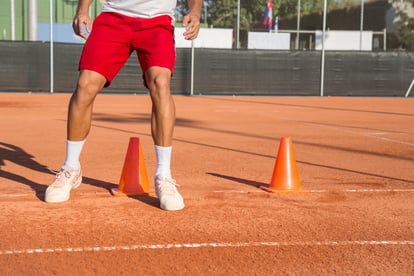 Agility drills basically represent an obstacle. Athletes who can respond faster to starts, stops, and change of direction earlier than the obstacle will have a practical advantage on the playing field. This blog highlights three of my favorite agility drills that can be built into your team’s conditioning routines. The benefits of these runs, jumps, and cuts include increases in reactionary speed, coordination, footwork, and body awareness. Athletes need to be able to change direction rapidly under control without decreases in speed.
Agility drills basically represent an obstacle. Athletes who can respond faster to starts, stops, and change of direction earlier than the obstacle will have a practical advantage on the playing field. This blog highlights three of my favorite agility drills that can be built into your team’s conditioning routines. The benefits of these runs, jumps, and cuts include increases in reactionary speed, coordination, footwork, and body awareness. Athletes need to be able to change direction rapidly under control without decreases in speed.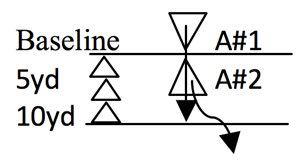 Drill 1: Offense/Defense—Partner Reaction Acceleration Tag
Drill 1: Offense/Defense—Partner Reaction Acceleration Tag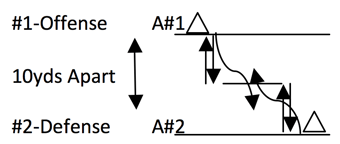 Drill 2: Cat & Mouse—5-5 Shuttle Reaction Tag
Drill 2: Cat & Mouse—5-5 Shuttle Reaction Tag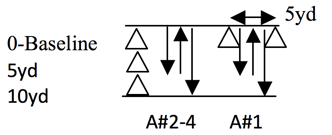 Drill 3: Shuttle Runs—Reaction 5-5-10 Shuttle
Drill 3: Shuttle Runs—Reaction 5-5-10 Shuttle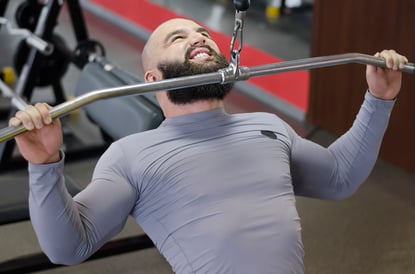 Have you ever tried working out in a time crunch or just wanted to get more exercise in a shorter period of time? Maybe you would like to speed through, but would rather have a plan of action to make your path a little easier. You are in luck because there is a fitness concept that does all of this while making sure you get a great workout. The idea is called supersetting, but it’s not as simple as you might think. To develop a great superset workout, you need to understand how a few concepts really work.
Have you ever tried working out in a time crunch or just wanted to get more exercise in a shorter period of time? Maybe you would like to speed through, but would rather have a plan of action to make your path a little easier. You are in luck because there is a fitness concept that does all of this while making sure you get a great workout. The idea is called supersetting, but it’s not as simple as you might think. To develop a great superset workout, you need to understand how a few concepts really work. Summertime is in full swing, and whether you are a competitive or recreational athlete, changes are definitely happening to your normal schedule. For high school and collegiate athletes, more time is spent at home and for general fitness enthusiasts, more options are available to you to fulfill your exercise quota (in other words,
Summertime is in full swing, and whether you are a competitive or recreational athlete, changes are definitely happening to your normal schedule. For high school and collegiate athletes, more time is spent at home and for general fitness enthusiasts, more options are available to you to fulfill your exercise quota (in other words,  For years people have been running in marathons and half marathons, 10Ks and 5Ks. And most recently the wide world of racing has taken a turn for themed runs, which is quite exciting if you have ever been to one! But no matter how many years go by, two goals continue to come up: running farther, and running faster.
For years people have been running in marathons and half marathons, 10Ks and 5Ks. And most recently the wide world of racing has taken a turn for themed runs, which is quite exciting if you have ever been to one! But no matter how many years go by, two goals continue to come up: running farther, and running faster.